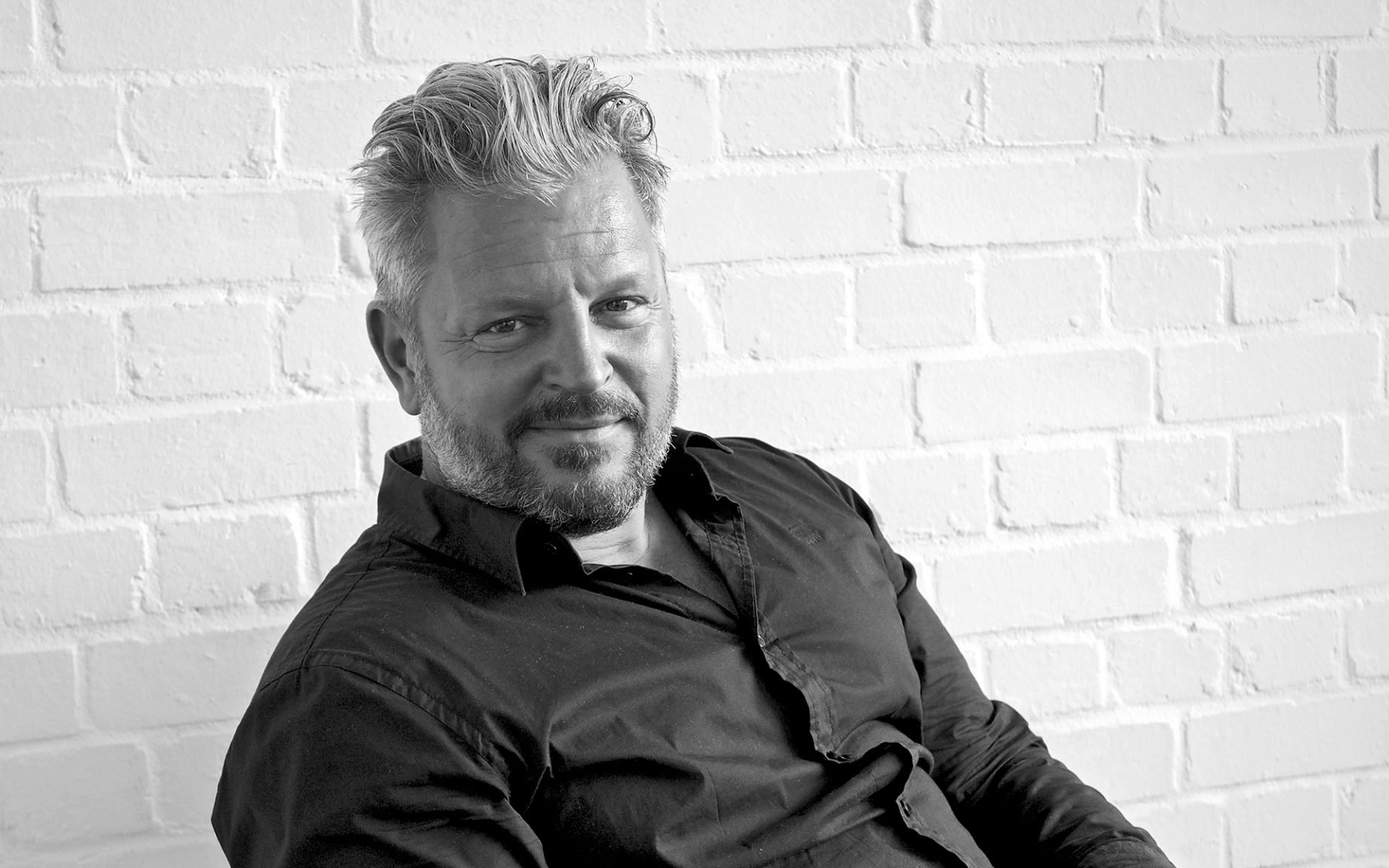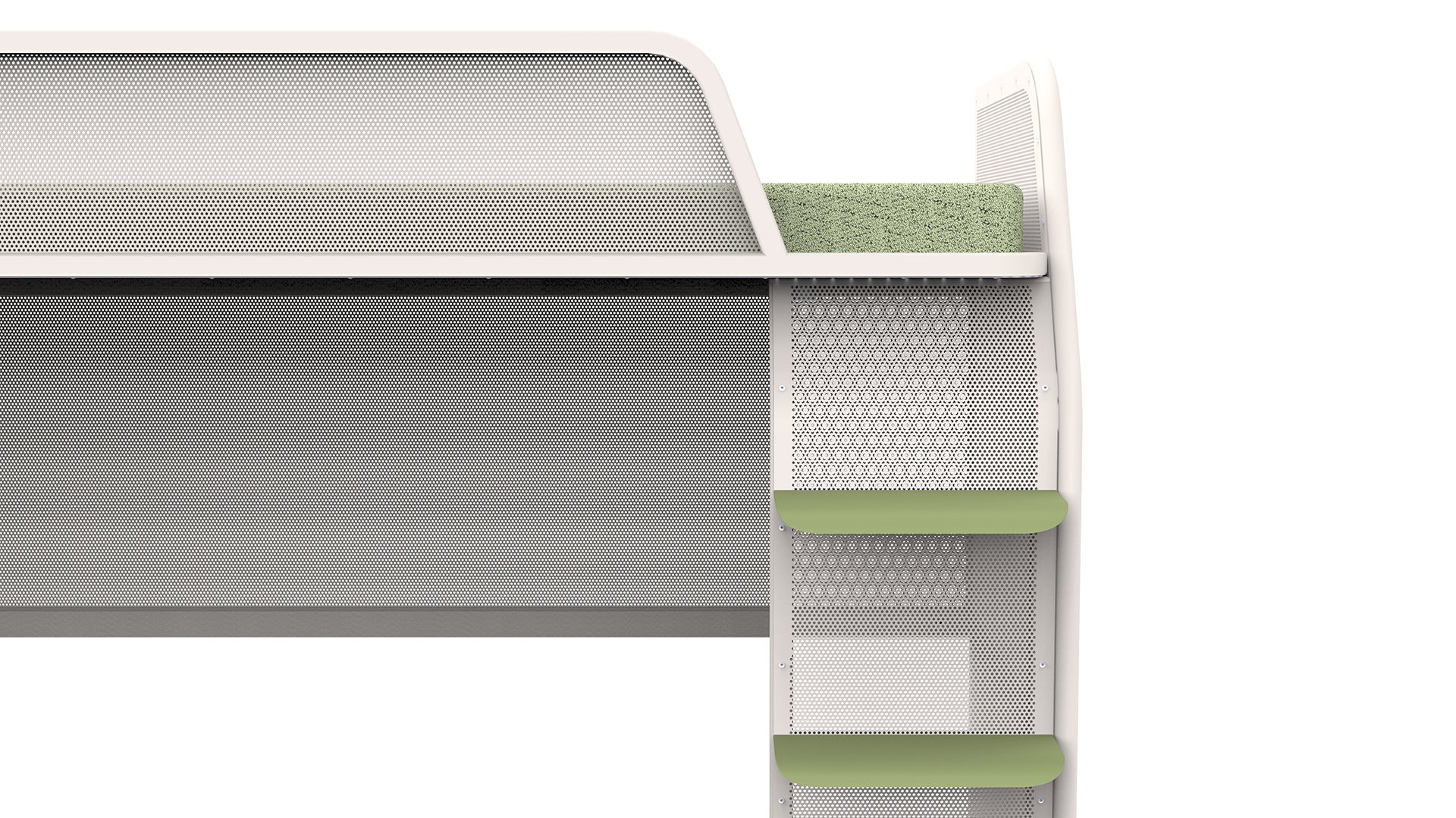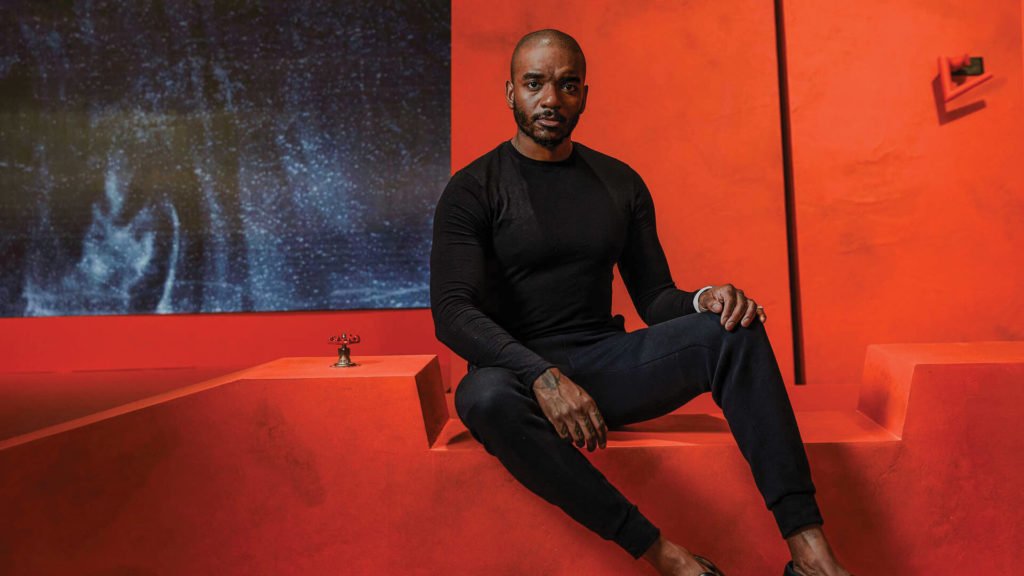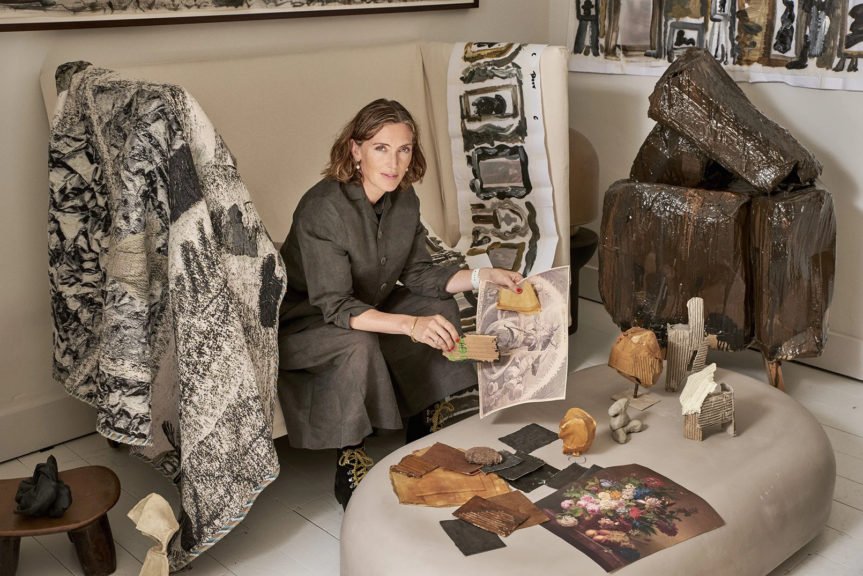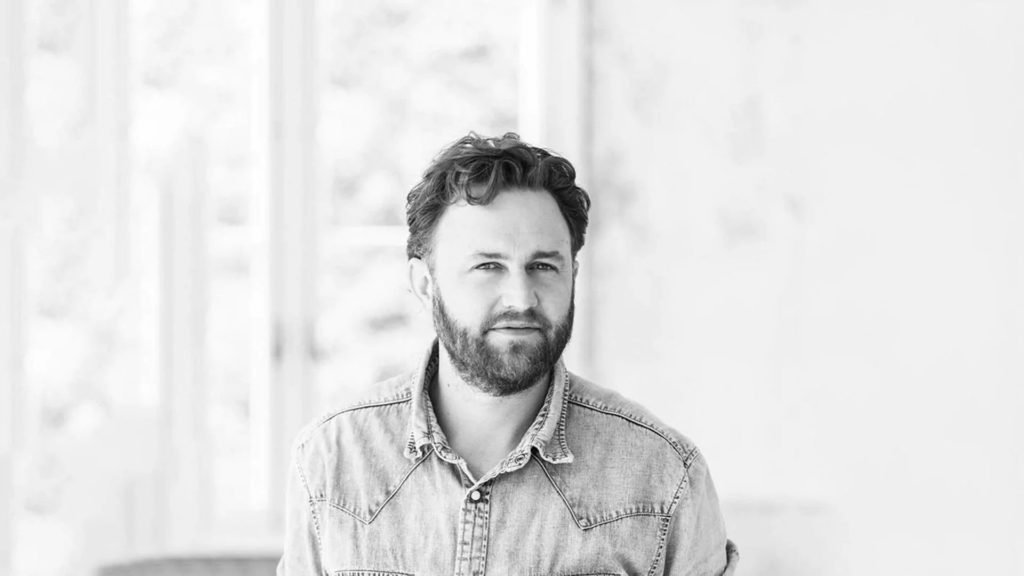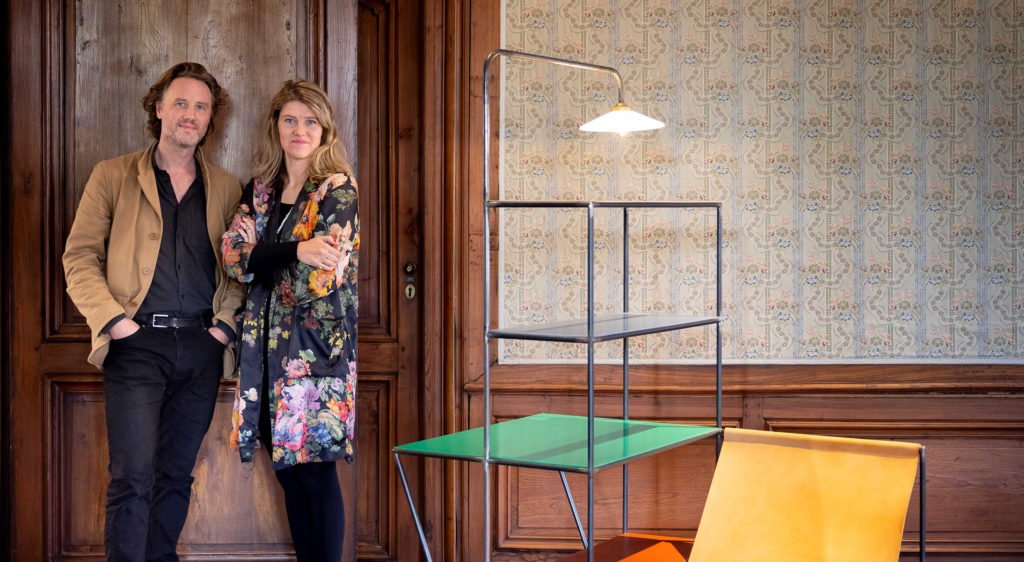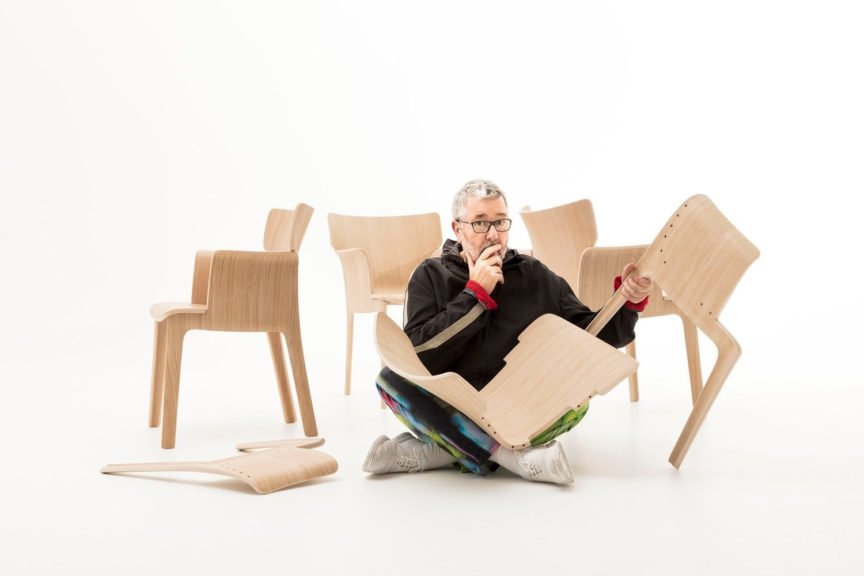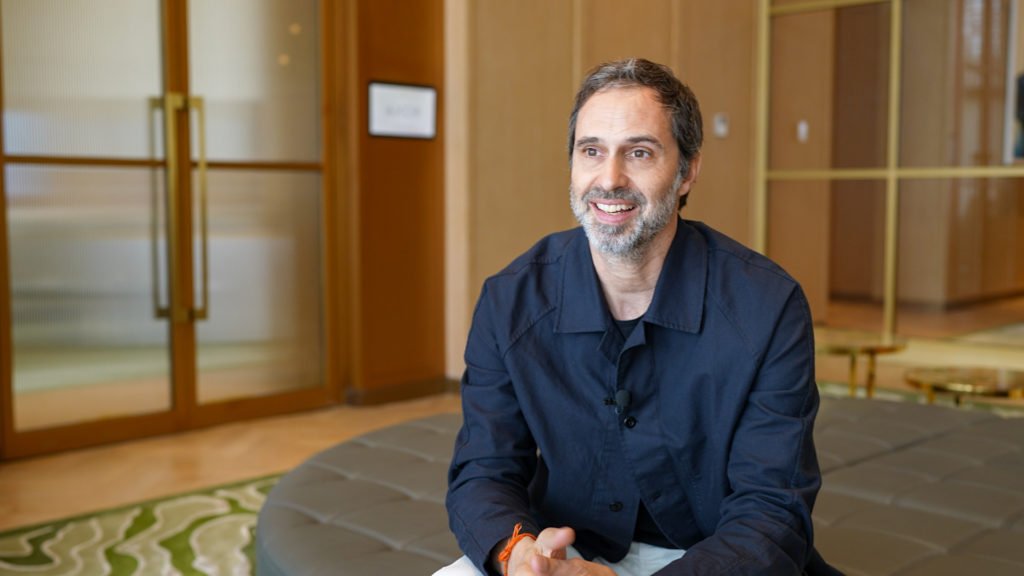Passionate by nature, and multifaceted as a designer, Rock Galpin’s design resume is more suited to someone who has been in the industry longer than his 30-year career. With such a prolific portfolio, you would be hard pressed to find a human more amiable and easygoing. Over a coffee and many laughs, here is what we learned about the designer.
A dynamic approach and incredible work ethic have seen Rock Galpin produce furniture for a range of clients from retail to corporate, create hospitality spaces, work on branding projects, and teach at Central Saint Martins College of Art & Design. All the while, his relentlessly enquiring mind has allowed him to focus on human-centred design that answer real social and practical needs, as well as serve an aesthetic role.
How did your design career blossom?
I think it really started during my degree course, when I designed my first piece of furniture – a type of fold out chair. I suppose it helped that my father was an architect as well.
Once I graduated and entered the interior related world, some of the milestones included the products I did with Zeev Aram and the Aram Store – that was a big stepping stone for me. And then a few awards followed.
Most recently, I was asked to work with the Ministry of Justice in the UK to head up a design team. The remit of the project was to overhaul UK prison cells in terms of furniture. I jumped at the chance, I thought it was an amazing project. The brief was truly challenging – working within compact living spaces on a product range that needed to be indestructible, low cost, safe, and could also be manufactured in the prisons. We involved the students and the prisoners to come up with some ideas, and we had a specialist materials team looking at introducing progressive materials. We finally whittled down 20 to 30 designs to about four. It’s a rigorous process, so to get to the stage of prototyping is quite amazing. It first gets prototyped, and then they have to work out if the product can actually be made, and how the skills needed to produce it might help prisoners get work later on. Then it gets tested in a lab, and then it gets tested in situ (for durability and fire-retardant qualities) in the prison. It was a very challenging but exciting project because there were such specific limitations and requirements. And we had to use logic as well as the emotional side of it – I wanted to create something softer (prison is such a hard place) that would nurture prisoners back into society. It’s also the only personal product they have in a shared cell, so it was allowing a sense of identity and hope.
“I try not to lock into a style that’s considered trendy (even though I have on occasion), but rather create balance – masculine and feminine, softness and definition, a combination of materials (contrast and texture)”
So what kind of designer are you?
I have an MA in Industrial Design and was trained as a product designer, but I have also been developing interior products and lighting, as well as a bit of branding for corporates, media and individuals. But my main focus is furniture – it’s always been centrestage. I saw that there was a gap between designers coming up with great ideas and brands committing to that designer. So I did a lot of exhibitions around the world, which produced a range of interesting products, one of which was a table base where the colour could be changed in two minutes! It did incredibly well.
But things didn’t work out exactly how I planned – instead of manufacturers and brands walking up to me and saying ‘we’d like to commission you’, I was getting more interior designers and architects wanting to specify my work. So I fell into the role of designer/supplier, designing and coordinating the production of collections of furniture, during which time I worked on hospitality projects and for the British Council.
It was through that work that I started attracting more brands, such as Designers Guild and Christopher Wray, and the work we did together won a few awards, including the Laurent-Perrier Design Award. Following that was a collaboration with brands in Japan and Italy. B&B Italia was one such brand, who incidentally have around 400 projects going at any given time, which is just incredible!
Aside from my design work, I teach at Central St Martins, which I’ve been doing for about 23 years.
What prompted the move to Dubai?
I was looking for a market that was on an up in terms of design. Designers do that, gravitate to a culture or a city where there’s room to grow. Dubai has got a new and developing appreciation for modern design. I’m excited to be part of that and push that forward. My project currently with Boss Design is quite a unique setup in that there aren’t that many very good quality manufacturers here, so to form a collaboration with a good manufacturer brand here in the UAE, creating products for the local audience is quite an opportunity.
Can you elaborate on the collaboration with Boss Design?
I can’t divulge too much, but one project includes a range of soft seating products with a very contemporary feel. It’s light and shows some of the craftsmanship we could tap into here.
The other looks at collaborative spaces – how the range of meeting types has expanded over the years, from internal board meetings, to team building, to ‘get away from my desk cos it’s too noisy’ meetings. The range looks at how to occupy an open-plan space with a product type which is adaptable and changeable, semi soundproofed, and can cater to a flexible group size.
How would you describe your design style?
I come from an integral perspective, with single concepts running through any design or collection that I work on. I aim to instill real soul and integrity in the work. Focusing on that has the best chance of longevity. I like to push the boundaries of how we work and live, using technology. But my work is always human-centred.
The collection I’m working on right now for Morgan Furniture, for example, is all to do with nurturing, wrapping, and enveloping. So the product comes out of this sense of comfort, and comfort on many levels.
I try not to lock into a style that’s considered trendy (even though I have on occasion), but rather create balance – masculine and feminine, softness and definition, a combination of materials (contrast and texture).
Prison furniture for the Ministry of Justice in the UK
What are your go-to sources of inspiration?
As cliched as it sounds, nature is a big one. For example, these days I frequently visit the beach and there are a lot of shells around at the moment, which has me thinking about the shapes and forms and detail found in shells. I’m fascinated by the idea of the cycles and balance found in nature.
On the flip side, I’m also equally fascinated by transport, movement, and transition… and sci-fi movies! Mainly because a good sci-fi movie creates a whole world that’s convincing.
Materials and technology too are a great source of inspiration as they make the seemingly impossible possible, and can progress an environment or space.
I also love good architecture, and take thousands of photographs of buildings. I did a design review recently of the ME Dubai hotel by Zaha Hadid, one of the last projects she touched, and the only one that includes both architecture and interiors together as a whole. Her style changed the way we see and understand spaces and objects, and she pushed boundaries.
“I aim to instill real soul and integrity in the work. Focusing on that has the best chance of longevity. I like to push the boundaries of how we work and live, using technology. But my work is always human-centred.”
If you could design anything without constraints…
I think my perfect project would be personal air travel. Having a car that floats in the air. I can imagine this thing being an amorphic, soft shape, efficient and sustainable. We’re coming to the end of using oil, and there are a few problems with electric vehicles (the weight, the batteries), but if we could create an energy source fueled by infinite natural resources that could go anywhere, imagine the possibilities of that. However, this prompts the issue of air traffic. Let’s imagine everyone in Dubai had one, how would you create order in the sky? But if you can do it with drones – create coordination – surely you could do that with a vehicle?
If not a designer, what would you be?
The only thing I can think of (and I quickly proved to myself that this wasn’t something I should do), was at the age of 16 when I put together a pop band. I managed to get three of us in on a local show, and the village hall was packed. I was very inspired to do music (my mom is a piano teacher, my sister plays various instruments, and I’d always played the guitar), so I thought I was destined to do that. But in the interview process for music colleges I realised that it was a lot of work and I certainly wasn’t interested in developing technically. It made me see that to go down the music route, I’d have to be technically sound.
What is the best advice you’d give aspiring designers?
You have to be committed to it. And focused. But you also have to be passionate. And if you are those things, then design is a career worth pursuing. It is a tough journey being a product and furniture designer. You have to really want to do that. On the flip side, when you see a whole space filled with products you’ve designed, and people enjoying and benefitting from them, it’s the most incredible feeling. Persist – it’s not a short-term game. It’s about the long-term plan and how you build your reputation.
If you were to describe yourself as a person?
I’m passionate, sociable, driven. I love human engagement and interaction. I’m always adventurous and inquisitive. I always ask a thousand questions – if I’m interested in something I need to get to the bottom of things, to the heart of it. I feel that builds foundations for understanding. I’m fairly out there and I’ll try most things once. Adrenaline-filled things as well, which explains my passion for cars. I love art, and spend a lot of time in art galleries and at talks. I tend to be in the centre of what’s going on.
Tell us a story, something people don’t know about you?
Very early on in my career, I worked for Planet 24, doing their TV sets. One day, the set designer called me up and asked for a new presenter table, to be finished in five days! I was busy doing this at breakneck speed and on a really low budget so, in return, I asked for a credit on the show. They responded with, ‘No we don’t do that for designers’. I then decided to put this huge sticker underneath the table saying ‘designed by Rock Galpin’, in case anyone looked underneath. The show decided to do the unveiling of their new presenter table live, and there was a big build up to it. For some reason, live on camera, the presenter takes a run up to the table and jumps on it, slips, and flips it over, and there is the sticker facing the camera. He looks up and says, ‘Ah! designed by Rock Galpin!’. So I got my credit in the end.

